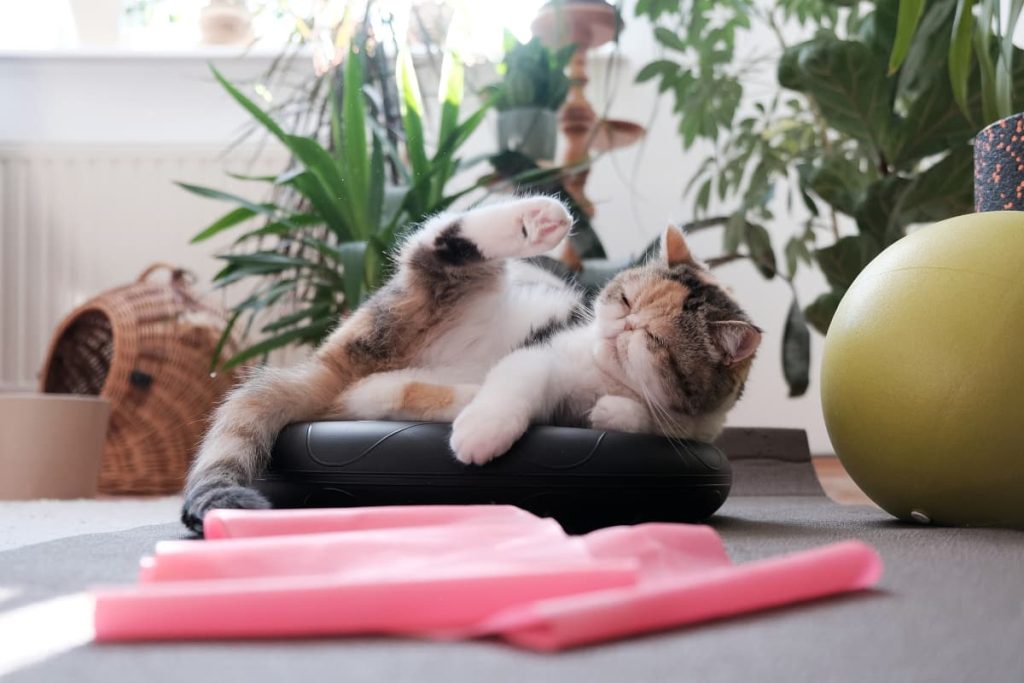Cat Training Methods Teach Desirable Behaviors Easily

Understanding how to effectively train your cat can significantly enhance both the pet-owner relationship and the overall quality of life for your feline friend. With the right techniques, you can encourage desirable behaviors while discouraging the less favorable ones. This is especially relevant in a world where cats are beloved companions, often living in shared spaces with humans.
Many cat owners face challenges when trying to mold their pet’s behavior, leading to frustration and a sense of helplessness. Fortunately, effective training can not only improve your cat’s behavior but also enrich their environment through engagement and mental stimulation. In this article, we will explore top methods for cat training that can lead to more harmonious living.
As you dive into the discussion, you’ll discover:
- Positive reinforcement techniques
- Interactive play as a training tool
- Behavior modification strategies
- Utilizing clicker training
- Setting realistic expectations based on cat behavior
Stay tuned for our Top 5 cat training methods that can help transform your feline’s habits and create a happier home for both of you.
SEE ALSO: Click here to read another article

Top 5 Methods for Training Cats: How to Teach Desirable Behaviors
Cats have long been misunderstood regarding their capacity for training. While they are indeed more independent and curious than some other pets, associating them with the image of untrainable creatures can’t be further from the truth. With the right approaches, owners can cultivate desirable behaviors and channel a cat’s curiosity in constructive ways. Implementing effective training methodologies can not only enhance the relationship with your feline friend but also bolster a harmonious household environment. Let’s delve into the top five methods for training your cat effectively.
5. Clicker Training
Clicker training is at the forefront for pet owners seeking an audibly focused teaching technique. Utilizing a small device that emits a distinct clicking sound can signal a precise moment when a cat performs an intended action. This immediate auditory cue is followed by a reward, often a tasty treat, to reinforce and encourage repetition of the behavior. The paramount element in clicker training is timing; the synchronization between the click and action is critical for clear communication.
Advantages: Unlike verbal praise, which might not always stand out to a cat, the clicker provides a salient sound that is consistently associated with positive outcomes. This distinction can accelerate learning and offers an interactive bond that benefits both the pet and the owner. An intriguing aspect of clicker training is its versatility—cat owners can apply it to fundamental commands, such as sit or come, or to more complex tricks, like jumping through hoops or fetching. As practice continues, many cats evolve to independently respond to cues or proactively start behaviors, showcasing their adaptability.
Consistency, however, remains crucial. Regular training sessions fortify the association between the click and reward, ensuring the method’s effectiveness. Owners might initially find using a clicker a bit challenging, but with patience, both human and feline participants will find harmony in the practice.
4. Positive Reinforcement
At the heart of animal training lies the concept of positive reinforcement, and cats are no exception to its benefits. This straightforward method capitalizes on rewarding desired behaviors and diffusing undesired ones. The specificity of rewards—from savory treats and playful interactions to the simple yet powerful pats and head scratches—depends on what your cat finds most motivating.
Key Elements of Positive Reinforcement:
- Treats: Find a treat your cat absolutely loves. A variety of flavors can prevent monotony.
- Playtime: Incorporate toys that mimic prey, encouraging your cat to romp and engage actively.
- Affectionate petting: A soothing rub under the chin or between the ears can be an excellent reward.
The immediacy of reward delivery after the behavior is non-negotiable in this method, as the goal is for the cat to make a direct connection between action and accolade. Positive reinforcement proves to be exceptionally versatile; it can address varied challenges, from reinforcing litter box use to discouraging furniture scratching. By methodically focusing on positive outcomes, this technique gradually eliminates the focus on undesirable habits.
3. Lure and Reward Training
Strategically combining attraction and reward, the lure and reward method involve using an enticing item such as a scrumptious treat or an intriguing toy to guide the cat into executing the desired action. Imagine, for instance, wanting your cat to hop onto a specific surface; employing the treat to beckon them is the initial step, with the subsequent issuance of the treat solidifying the action.
Effective Practices:
- Always reward upon successful completion: Consistency in rewarding is necessary for instilling behavior.
- Decrease reliance on the lure gradually: As your cat grows accustomed to the action, reduce dependency on physical lures, ideally transitioning to verbal commands or hand signals.
In the budding stages of training, cats might exhibit hesitance or skepticism, but perseverance in this method often shows significant improvements in responsiveness to commands. The lure approach serves as a stepping stone toward more advanced training techniques, where the presence of a lure is no longer needed.
2. Target Training
Transitioning into a more interactive realm, target training stimulates your cat to engage with a distinct object or your finger, usually with their nose or paw. By introducing a target, this technique encourages cats to follow the object, which naturally transitions into learning a plethora of tasks—it’s an adaptable tool for a wide variety of challenges or tricks.
Advantages of Target Training:
- Enhances focus and engagement: Cats often become more attentive and attentive during sessions, seeing them as games.
- Allows for teaching complex commands in steps: Targets can simplify complex tricks by breaking them into minor, manageable parts.
The merits extend beyond training sessions, proving beneficial in practical and often stressful settings, such as at the veterinarian’s office or during grooming. The cooperative nature of this method reduces stress, making such necessary civic interactions far smoother.
1. Obedience Training with Routine
Leading the cadre of effective methods is obedience training intertwined with a seamless routine. This strategical incorporation transforms training from being an isolated event into a comprehensive component of daily life. Cats respond well to familiarity, and by embedding training cues or sessions into regular activities, such as during feedings or play, you establish a predictable environment that emphasizes positive experiences.
Benefits:
- Creates a consistent learning environment: The predictable patterns enhance learning and help solidify desired behaviors.
- Enhances the bond between the cat and owner: Routine interaction fosters a more profound understanding and companionship.
Over time, ingrained habits amass, simplifying the teaching process and minimizing misunderstandings about expectations. Moreover, this routine stimulates comfortable growth and development, bolstering your cat’s security sense.
In conclusion, the synthesis of these five methods offers a holistic approach to training your feline companion. Achieving desirable behaviors relies heavily on the virtues of patience, consistency, and understanding that each cat’s learning capability and pace are unique. Through dedication and adaptation, a harmonious co-existence with your chronically curious cat is readily attainable, transforming the entire training endeavor into a rewarding journey for both parties involved.
| Category | Description |
|---|---|
| Positive Reinforcement | Utilizing rewards such as treats or affection to encourage desired behaviors in cats. |
| Clicker Training | Involves using a clicker sound to mark desired behaviors, followed by a reward; reinforces learning swiftly. |
| Consistent Commands | Teaching specific verbal cues consistently to help cats associate words with actions effectively. |
| Gradual Training | Breaking down training sessions into short, manageable segments to prevent frustration and maintain focus. |
Building upon the knowledge of how to train cats effectively, positive reinforcement emerges as one of the most effective techniques. This method rewards your cat for displaying desirable behaviors, creating a strong motivation to repeat those actions. For example, when your cat uses the scratching post instead of the furniture, offering a treat reinforces this behavior. The principle is straightforward: by associating actions with rewards, your cat learns the actions you expect, paving the way for successful training sessions.Another powerful tool in your training arsenal is clicker training. This method utilizes a small handheld device that makes a distinct clicking sound. When employed correctly, this sound marks the precise moment a cat exhibits the desired behavior, followed by an immediate reward. For instance, if your cat follows a command to sit, clicking at that exact moment ensures the cat understands which action led to the reward. This method not only speeds up the learning process but also enhances communication between pet and owner.In any training regimen, consistency in commands is crucial. Establishing a set of commands and using them uniformly during training helps avoid confusion. For instance, always using the word “sit” when asking your cat to sit down reinforces the expected behavior. Consistent training also builds trust and respect between the cat and the owner, leading to more effective learning.Effective training does not happen overnight; hence, utilizing a gradual training approach is vital. Starting with short training sessions allows your cat to remain engaged, preventing boredom or frustration. Gradually increasing the complexity of the tasks as your cat masters simpler commands keeps the training experience positive and nurturing. The objective is not only to train but also to build a loving and trusting relationship, which encourages further exploration and learning for both cat and owner alike.
YOU MAY ALSO LIKE: Read this other article
Frequently Asked Questions about Cat Training Methods
How can I start training my cat to follow commands?
Begin training your cat by establishing a routine that will help your feline feel at ease. Consistency is key, so work on setting a regular schedule for training sessions. Ensure that you use positive reinforcement techniques, such as offering treats or praises, to motivate your cat to learn commands. Start with simple commands like sitting or coming when called. Remember, patience and regular practice will yield the best results.
Are there specific training methods that work best for cats?
Cats respond well to training methods grounded in positive reinforcement, using treats, playtime, or gentle petting as rewards. Clicker training is particularly effective since it provides an auditory cue that allows cats to associate their behavior with a reward. However, it is crucial to respect your cat’s pace—rushing the process is likely to result in frustrations for both you and your cat.
Why is my cat not responding to training?
There are various reasons why a cat might not respond to training. Consider if your cat is experiencing any stressors or disturbances in their environment. Cats are sensitive creatures, so comfort and security play a significant role in their willingness to learn. Also, review your training methods; perhaps the rewards are not enticing enough, or the sessions are too long, overwhelming your feline friend.
Can older cats still be trained effectively?
Yes, older cats can absolutely be trained to adopt new behaviors. While training a kitten might yield quicker results due to their natural curiosity and energy, older cats are equally capable learners. It’s important to be patient and use methods suited to their age and temperament. Tailor your approach to accommodate any physical limitations older cats may have, and ensure that their training environment is free from distractions.
How can I prevent unwanted behaviors in my cat?
To prevent undesirable behaviors, it’s vital to understand the reasons behind them. For example, cats might scratch furniture due to boredom or the need to stretch their muscles. Providing appropriate outlets like scratching posts or interactive toys can redirect this behavior. Additionally, maintaining consistent and gentle discipline, alongside rewarding preferred actions, helps reinforce desired behaviors over time.
CHECK OUT: Click here to explore more
Conclusion
Training cats can sometimes be overlooked due to their innate independence, but it remains a crucial aspect of pet care. Through this exploration of training methods, it is evident that applying positive reinforcement is not only effective but also fosters a harmonious relationship between pet and owner. Clicker training serves as an instrumental part of this process, providing a clear and immediate connection between actions and rewards.
Summary of Key Points
- Understanding a cat’s motivations is essential to effective training. Every cat is unique, and their preferences should guide the reward-based approach.
- Consistency is crucial; training sessions should be regular and reinforce the desired behaviors without causing stress.
- Incorporating play into the training can make learning fun and engaging, encouraging active participation from the cat.
- Patience and persistence are vital, as some behaviors take time to develop and solidify.
- Safety and comfort are paramount, ensuring the environment is favorable for the cat’s learning experience.
Ensuring that these methods are adapted with care and consideration of a cat’s individual traits not only helps in teaching desirable behaviors but also enhances the overall well-being of our feline companions. Training is not merely about instilling obedience but nurturing a lifelong bond of trust and understanding. As pet owners, delving deeper into these methods offers insight into promoting a balanced and enriched life for cats. By truly appreciating and implementing these techniques, we open doors to more fulfilling interactions with our pets, ultimately contributing to their happiness and ours. As the exploration of pet training continues, the journey of discovery offers endless opportunities for both learning and growth.


